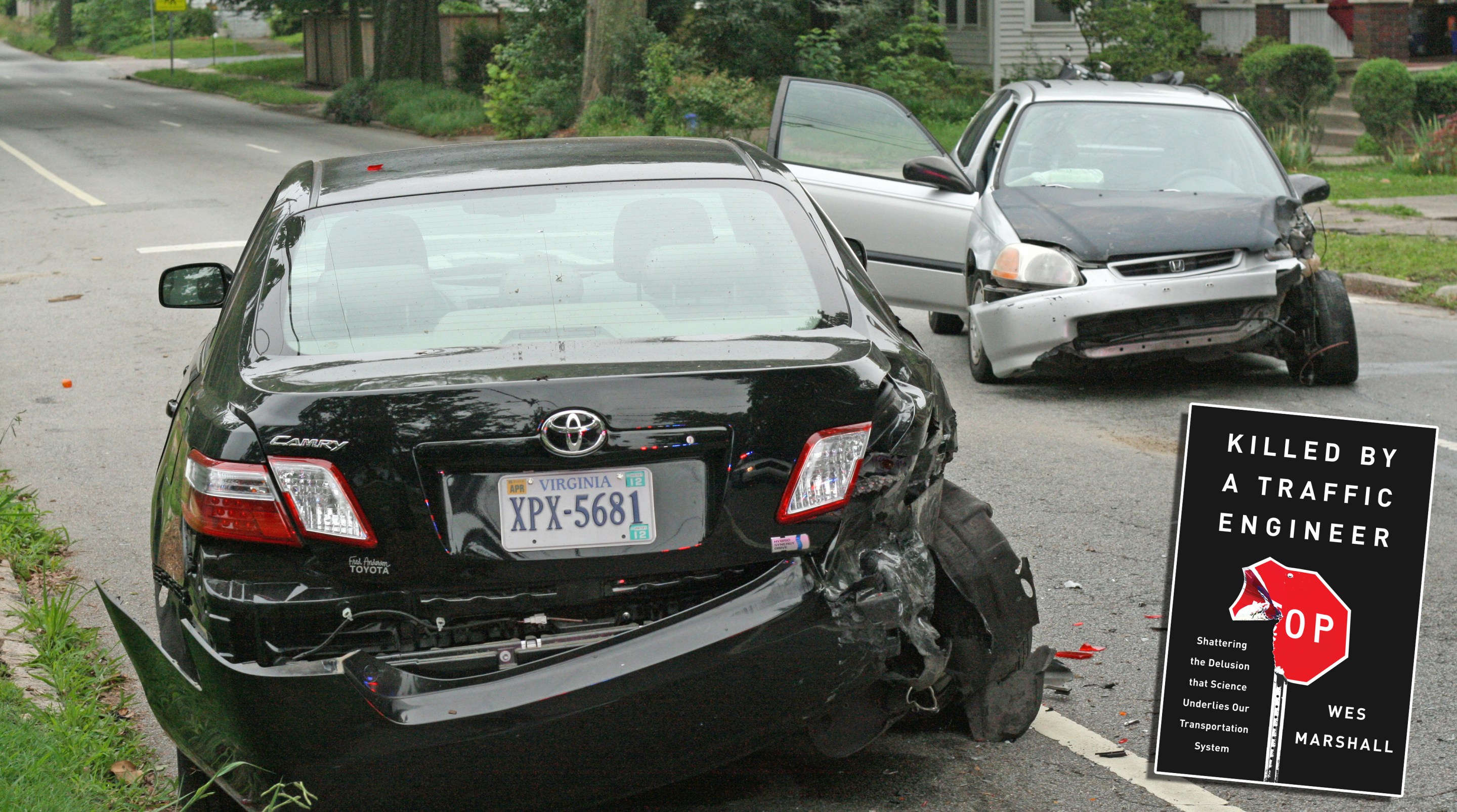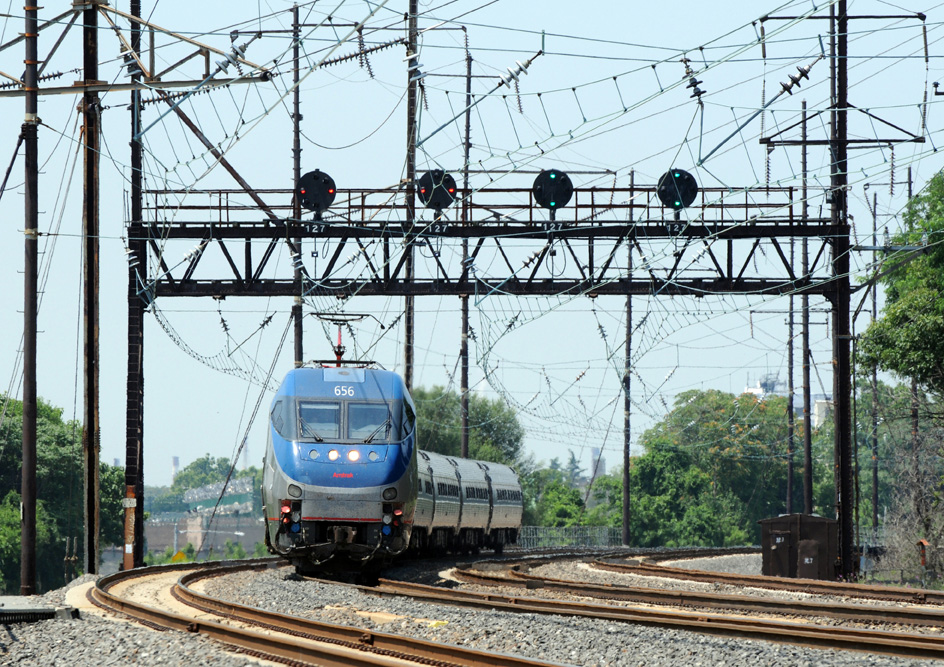The following is an excerpt from Killed by a Traffic Engineer by Wes Marshall. It is republished with permission. Check back soon for a series of interviews with the author.
In the postscript to his last book, James Reason — our "Human Error" spiritual guide — summarized a report into the problematic culture of a British hospital. The inquiry found several issues with the doctors and hospital administrators that could be levied against traffic engineers (well, if you replace the word "patients" with "road users" in this list):
- “A lack of openness for criticism”
- “A lack of consideration for patients”
- “Defensiveness”
- “Looking inwards, not outwards”
- “Secrecy”
- “Misplaced assumptions about the judgements and actions of others”
- “An acceptance of poor standards”
- “A failure to put the patient first”
Sure, some of these criticisms might be a little unfair to traffic engineers. But a lot of them hit the mark; it would be hard to argue otherwise. Traffic engineers aren’t trying to do a bad job, though. In most cases, we’re just doing what we were taught.
So, what do we teach them?
One common refrain I hear is that we have a silo problem. In other words, traffic engineers are way too specialized and too deeply focused on the traffic engineering world.
But, to be honest, we don’t actually teach them all that much about traffic engineering.
Let’s say you graduate from high school and get into an undergraduate civil engineering program. How many transportation courses will you take in your first year?
The answer is zero.
How about your second year? The answer, again, is zero. If things go well, you will probably take your first transportation engineering course when you are a junior in college.
When you get to your senior year, you have more choices. Do you want a second transportation course that typically focuses on highways and designing their vertical and horizontal curves? If not, feel free to take design courses in structural, hydrology, or geotechnical engineering. Add in a capstone course or a full-year thesis course like I had at the University of Virginia1 and you graduate with a civil engineering degree.
In total, you will probably graduate with one or two transportation engineering classes under your belt.
Some students will graduate with a civil engineering degree having taken zero transportation courses. Shocking as it may seem, accredited civil engineering programs do not need to offer any transportation-specific courses whatsoever. As long as the school offers courses in at least four other “technical areas appropriate to Civil Engineering,” it meets the accrediting criteria.
The Bureau of Labor Statistics says that fewer than 25 percent of practicing civil engineers have a graduate degree. In other words, more than three-fourths of civil engineers start off with only what they learned as an undergraduate. Combine that undergraduate education with whatever they learn from our guidebooks or on the job from other engineers, and that’s the extent of it for most traffic engineers.
'Supposed experts'
Not having any transportation courses in your background won’t preclude you from taking the transportation Professional Engineering exam. As long as you’ve gained some work experience under a licensed Professional Engineer, you are good to give that test a shot.2 Should you pass, you are a licensed Professional Engineer.
Is it possible to get good transportation engineers with this kind of education system? Sure, but you still have to ask, what the heck an are we doing? How do we expect to produce exceptional transportation engineers—or even competent ones—if we aren’t teaching them about transportation engineering, let alone road safety? Why should we be surprised that traffic engineers hide behind our guidebooks and the status quo when we haven’t given them the basic wherewithal to understand their own silo?
The author of that British hospital report mentioned above said that fixing things will require “openness, transparency and candor throughout the system.” His thinking was that “duty of candor” should be a legal requirement akin to “duty of care.”
Traffic engineering needs much of the same.3 Still, we’ve put ourselves in a tough position. We’re the supposed experts, but our undergraduate education system isn’t set up to give us that expertise. We hope we’ll pick it up on the job, but most firms aren’t looking to educate their young engineers beyond getting tasks done. Even if these firms were, are we sure we want the “experienced” engineers teaching it using the same old guidebooks? Either way, there isn’t much time for traffic engineers to sit back and figure out what’s behind the curtain of why we do what we do.
And traffic engineers don’t want others peeking behind our curtain because we don’t quite know what’s back there ourselves.
So it’s easier to be overconfident — and defensive — of both ourselves and our guidelines. We scoff at questions about the quality of our work. Of course we’ve done our job and done it well. Any suggestions — let alone data — to the contrary are an attack on our personal and professional pride, as well as on 100 years of science. When you combine such an undergraduate education with these sorts of self-justifications, it makes sense why traffic engineers are unaware of the limits of our expertise and unaware of what we’ve done wrong.
'So-called safety'
A week after the 1961 Bay of Pigs fiasco, President John F. Kennedy made a speech. In his address, Kennedy said his administration “intends to be candid about its errors; for as a wise man once said: ‘An error does not become a mistake until you refuse to correct it.’”
Traffic engineers are well past that point. Our errors have become mistakes, and we continue to perpetuate those mistakes and kill millions of people on our roads.
In the early 2000s, Frank Gross and Paul Jovanis reached out to every transportation engineering school in the United States, multiple times, to see which ones offered road safety courses. Their “scan of U.S.-based university courses in safety identified relatively few current offerings within engineering programs.” Out of the 117 universities that responded, only 29 had a safety course.
They dug deeper and found that 10 of the 29 safety courses are not offered on a regular basis. They then compared each of these courses against a list of 37 learning objectives based on five road safety “core competencies” that had been developed over a multiyear period by “educators, researchers, public officials, and leaders of industry and professional associations” of a task force on safety and workforce development. The core competencies represented what the committee saw as the baseline knowledge and skills needed by every road safety professional. And when they say baseline, they mean basement: “The competencies do not represent all safety knowledge that a safety professional should know; they represent the core that they must know.” In other words, the core competencies “are intended to define the floor of knowledge.”
Whether or not we differ on the core competencies needed for a good road safety professional,4 their findings are still depressing: “A survey of the curricula and course content of university engineering … suggests that they are not playing a major role in instilling safety-related knowledge and skills in the road safety workforce. Safety-related content is spotty in both undergraduate and graduate programs, and no program provides a comprehensive basis for competency in road safety management.”
What’s even more depressing is what most so-called college safety courses mean by safety. Here is how a National Academies report describes it: “An in-depth review of course materials revealed that many current safety courses … utilize engineering texts (both design- and operations-oriented) [that] represent the content as ‘safety-oriented.’”
You want a safety course? We’ve got a safety course. But what are we actually teaching you? “Although many transportation courses indicated a strong presence of safety content, the majority only incorporate aspects of safety with primary content in design and operations.”
In other words, we teach the guidebooks — which have a dubious connection to safety5 — and assume that doing so equates to safety. Safety, after all, is just what happens with we focus on things like capacity, right?
Here are Gross and Jovanis again:
“Some have argued that traffic safety is not a field of legitimate scientific inquiry, but is somehow derived from ‘good’ planning, design and traffic operations. Proponents of these positions argue that adherence to existing professional guidelines (e.g. AASHTO Green Book and MUTCD) adequately addresses safety.” Six of the so-called safety classes they reviewed didn’t even have the word safety in the course title.
'Where did all the road safety professionals come from?'
Most traffic engineers get roped into thinking that safety is implicit to our business-as-usual approach to design. As Ezra Hauer says in his 2005 paper, many believe that adhering to guidebooks “will automatically ensure that a proper amount of safety is built into roads” but “such a belief, while honestly and passionately held, is without foundation.”
Ezra goes on to discuss his own teaching: “For 27 years I taught traffic engineering, highway design, and transportation planning to budding civil engineers. ... True, they may take a course or two about traffic and highway design. In the traffic course most of the time will be devoted to capacity and delay; in the highway design course to geometric design standards. The road safety consequences of their engineering design decisions will not be mentioned.”
And toward the end of his paper, he asks a good question: “How can researchers be trained in road safety and in road safety research methods if no university offers such a program?”
In total, Gross and Jovanis found only four universities with a second safety course. Still, a Transportation Research Board Special Report counts 100,000 workers with road safety responsibilities, and “nearly 10,000 of them spend all or most of their workday managing road safety.”
Given how “few universities offer a systems-level road safety curriculum, and there are few places where public agencies can recruit trained safety professionals,” where did all these road safety professionals all come from?
The same Special Report says that “the building of the road safety profession has been a largely ad hoc and unstructured process,” so “most appear to have relied on on-the-job learning after migrating into the road safety workforce from other disciplines.”
In another part of the report, an interesting caveat is added to the end of a similar thought: “Core safety knowledge and skills are often obtained on the job, if they are obtained at all.”
If they are obtained at all?!? It’s no wonder things haven’t turned out so well.
Footnotes
- My undergraduate thesis was supposed to be about the trenchless tunneling methods used for the Big Dig in Boston. Looking at it now, I wrote more about the generational opportunity for a major city to reclaim dozens of acres of downtown land from urban freeways than I wrote about trenchless tunneling technology.Return to content at reference 1↩
- You usually need a civil engineering degree and to have passed the Fundamentals of Engineering (FE) exam (a precursor exam the Professional Engineering exam). These days, 10 percent of the questions on the FE are related to transportation.Return to content at reference 2↩
- And that is one reason I wanted to write this book.Return to content at reference 3↩
- In the words of the ancient secret society known as the Stonecutters, to which Homer Simpson becomes the Chosen One, we do. That is, we do indeed have different thoughts on the core competencies of a road safety professional. Return to content at reference 4↩
- [Editor's note: Read Killed by a Traffic Engineer for a deep dive on those "dubious" connections.]Return to content at reference 5↩
From Killed by a Traffic Engineer by Wes Marshall. Reproduced by permission of Island Press, Washington, D.C.






